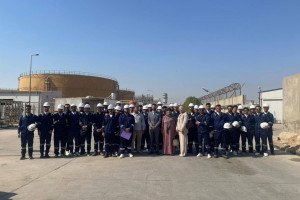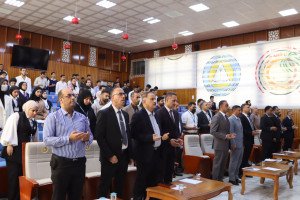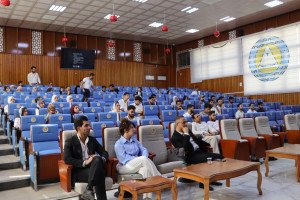
Professors from the Department of Civil Engineering, Assistant Professor Dr. Mayada Yahya Mohammed, Assistant Professor Kadhim Zaboun Nasser, Assistant Professor Dr. Muthanna Shaker, and Assistant Professor Dr. Ayman Mustafa from Ain Shams University in Egypt, participated in publishing a study titled "Comprehensive Evaluation of Sustainable Self-Compacting Concrete (SCC) with High-Density Polyvinyl Chloride (HDPVC) Recycled Pipes as Partial Coarse Aggregate Replacement" in the Ain Shams Engineering Journal, published by Elsevier. The journal is peer-reviewed and indexed in the Clarivate Scopus database and falls within the first quartile (Q1) of the international scientific journal classification, with a CiteScore of 12.2 and IF of 5.9.
This study explored the potential of recycled high-density polyvinyl chloride (HDPVC) extracted from scrap pipes as an environmentally friendly alternative to natural coarse aggregate in self-compacting concrete. (SCC), with fly ash incorporated as a supplementary cementitious material. The effect of varying HDPVC replacement levels (5%, 10%, 15%, 20%, and 25%) by volume of natural coarse aggregate on the fresh, hardened, and durability properties of self-compacting concrete (SCC) was investigated.
Experimental results indicated satisfactory performance in terms of passability, flowability, and segregation resistance for mixes containing up to 25% HDPVC. The optimum strength improvement was observed at a 10% HDPVC replacement level, resulting in 20%, 16%, and 17% improvements in compressive strength, tensile strength, and flexural strength, respectively, at 28 days of curing compared to the reference mix. Conversely, at higher levels, strength subsequently decreased until it almost equaled the strength of the reference mix. Furthermore, strong correlations of 0.9704 and 0.9117 were observed when comparing the Compressive strength with Schmidt rebound number and ultrasonic pulse velocity (UPV), respectively.
Self-compacting concrete containing HDPVC particles demonstrated superior resistance to sulfuric acid attack while maintaining adequate resistance to salt attack compared to the reference mixture. However, significant losses in weight and compressive strength were recorded when exposed to high temperatures (450°C), limiting the material's application in such conditions. Based on a comprehensive evaluation of fresh and hardened properties and durability characteristics, a self-compacting concrete mixture with a 10% HDPVC replacement is recommended for general construction applications where enhanced mechanical performance and improved acid resistance are beneficial, except in high-temperature environments due to significant material degradation.
In summary, this research offers a practical, dual-benefit solution: cleaning up the environment of plastic waste and creating green, efficient, and sustainable building materials, strongly supporting the shift towards an environmentally responsible construction industry.







